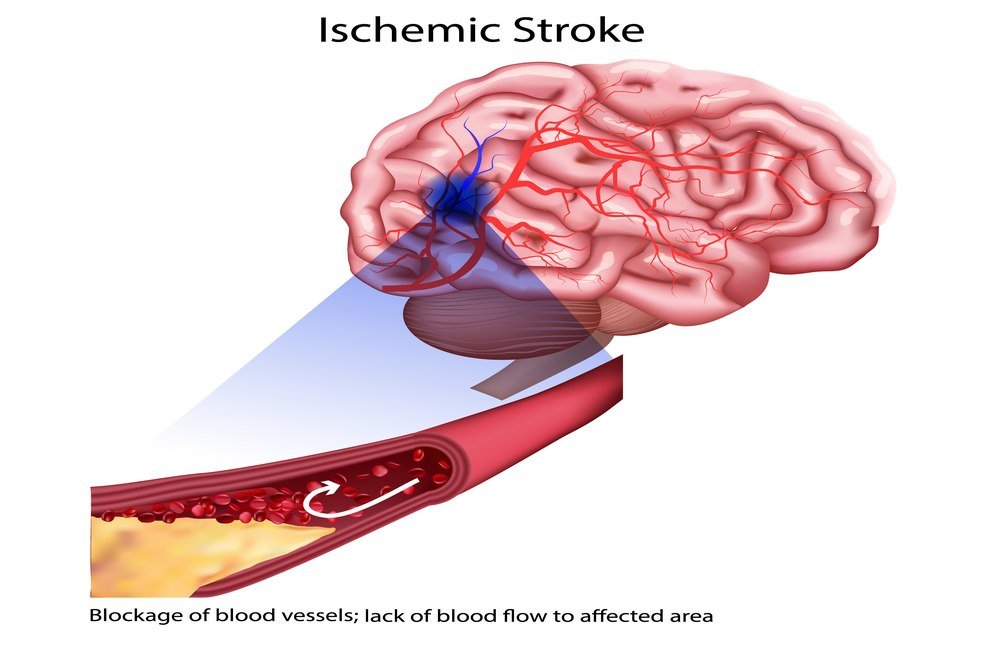Pathophysiology of stroke

The two types of stroke have different pathological features and precipitating factors. Both types, however, are caused by brain tissue damage or death in a localized area.
Pathophysiology of ischemic stroke
Ischemic stroke results in a loss of, or deficit of blood supply to the brain tissue. The primary cause of ischemia is a thrombo-embolic event that may be precipitated by high cholesterol, atherosclerosis, or atrial fibrillation. An embolus that can be cardiac in origin, or a thrombus that is intracranial in origin can plug the blood vessels and occlude the blood supply. This leads to cellular hypoxia (a state of oxygen starvation) in the focal area. Hypoxia can, in turn, compromise the vitality of the tissue and lead to cell death. Scientifically, tissue death due to hypoxia is termed as an infarct. Tissue death triggers an ischemia cascade that is closely followed by an inflammatory process to clear the dead cell debris and toxins. This inflammation is a pathophysiological threat to the surrounding areas too. Inflammatory cells release reactive oxygen species that cause additional damage to the blood vessels and surrounding tissues. The brain also happens to be deficient in the antioxidant mechanisms to cope with the oxidative damage of these molecules. Thus, this post-ischemic inflammatory process leads to loss of the neurological control of various functions of the body. The amount of cerebral damage depends upon the severity of the hypoperfused state of cells and the length of time it lasted.
